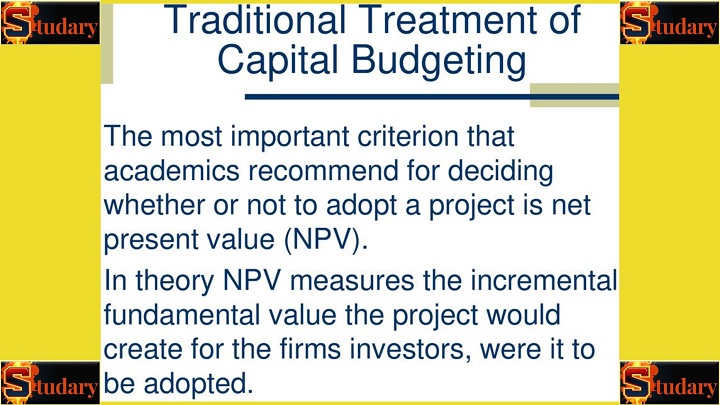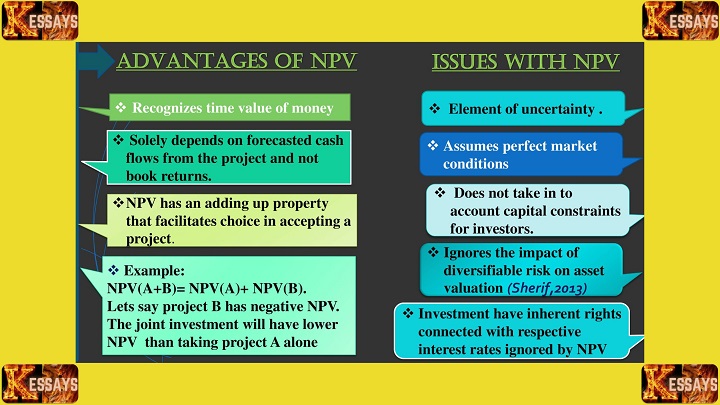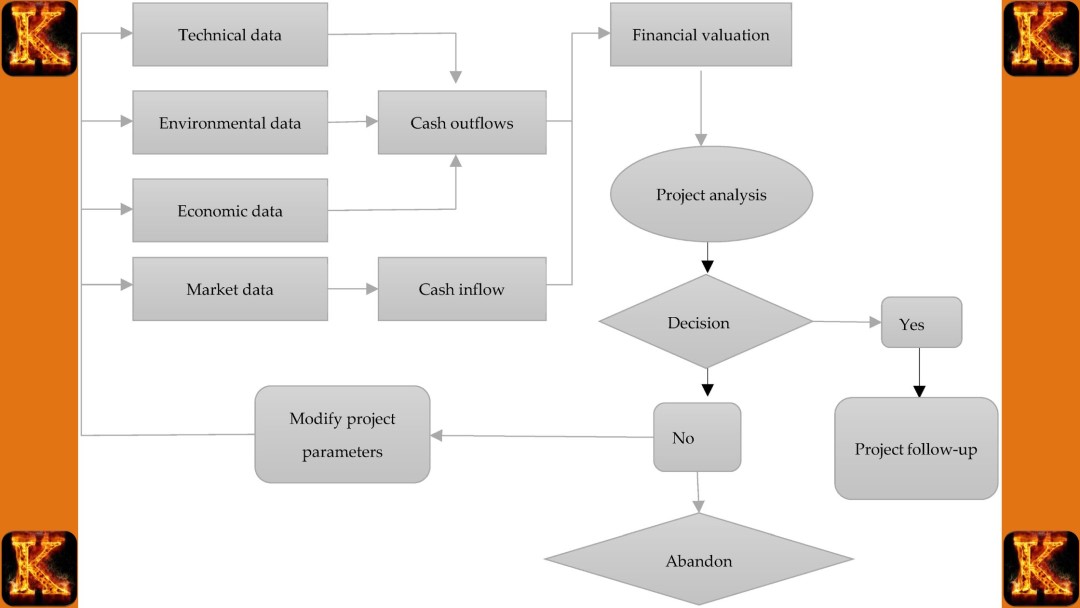Introduction
Behavioral Biases in Capital Budgeting
Behavioral biases are systematic errors in judgment and decision-making that arise from cognitive limitations, emotional influences, or social pressures. In the context of capital budgeting, these biases can distort how managers assess risks, forecast returns, and evaluate investment opportunities. Instead of relying solely on objective data, decisions may be influenced by overconfidence, anchoring, loss aversion, or other psychological tendencies.
Relevance to Investment Decisions
Capital budgeting involves long-term commitments of resources, making accuracy in decision-making crucial. When biases interfere, firms may misallocate capital, underestimate risks, or pursue projects that do not maximize shareholder value. Recognizing the presence of these biases helps explain why investment outcomes often diverge from rational financial models.
Importance of Understanding Biases
A clear understanding of behavioral biases is essential for promoting rational investment decision-making. By identifying how these biases shape judgment, managers and organizations can design strategies to mitigate their effects, such as implementing structured decision-making processes, peer reviews, or relying on data-driven analysis. Ultimately, addressing behavioral biases enhances the quality of capital budgeting decisions and supports sustainable value creation.
Behavioral biases refer to cognitive and emotional tendencies that lead individuals to deviate from rational decision-making processes. These biases can significantly impact capital budgeting decisions, where organizations assess investment opportunities for long-term value creation. Understanding the role of behavioral biases in capital budgeting is crucial, as it allows decision-makers to recognize and mitigate potential pitfalls that could hinder effective resource allocation and hinder organizational success.
Behavioral Biases in Capital Budgeting
Overconfidence Bias
Overconfidence is one of the most prevalent biases in managerial decision-making. In capital budgeting, overconfidence leads decision-makers to overestimate their ability to predict project outcomes, market conditions, and financial returns. This bias often manifests in overly optimistic cash flow projections, underestimation of risks, and excessive reliance on personal judgment rather than objective data. Managers influenced by overconfidence may undertake projects with inflated expectations, allocating capital inefficiently and exposing the organization to higher levels of risk. While confidence is necessary for strategic decisions, unchecked overconfidence distorts risk-return assessments, making it a significant threat to rational capital allocation.
Anchoring Bias
Anchoring occurs when individuals rely too heavily on an initial piece of information, even when subsequent data suggests otherwise. In capital budgeting, this often appears when managers become anchored to early cost estimates, feasibility assessments, or market forecasts. Even if new evidence emerges, such as changes in interest rates, regulatory policies, or project feasibility, decision-makers may fail to adequately adjust their judgments. This results in biased investment appraisals and can cause organizations to commit resources to projects that no longer align with updated realities. Anchoring reduces adaptability and increases the likelihood of poor investment decisions in dynamic business environments.
Confirmation Bias
Confirmation bias drives decision-makers to seek, interpret, and prioritize information that validates their pre-existing beliefs while disregarding evidence that contradicts them. In capital budgeting, this bias is especially dangerous because managers may selectively highlight data supporting their preferred projects, ignoring risks or opposing viewpoints. For example, a manager convinced of a project's success may emphasize favorable financial indicators while dismissing market volatility or operational challenges. This narrow perspective undermines objective evaluation and increases the probability of approving projects that fail to deliver expected returns. Overcoming confirmation bias requires structured decision processes, independent reviews, and a culture of critical inquiry.
Endowment Effect
The endowment effect refers to the tendency of individuals to assign greater value to assets they already own compared to similar assets they do not possess. In capital budgeting, this bias manifests as reluctance to divest from underperforming projects or assets simply because of existing ownership. Managers may overvalue these investments, resisting reallocation of capital to more profitable opportunities. As a result, resources remain tied up in inefficient ventures, limiting organizational flexibility and hindering long-term growth. Addressing this bias requires adopting objective valuation methods and emphasizing future potential over past ownership.
Loss Aversion
Loss aversion, rooted in prospect theory, reflects the tendency to fear losses more intensely than equivalent gains are valued. In capital budgeting, this leads managers to avoid projects with even a small probability of loss, despite potentially high expected returns. Such overly cautious behavior may result in underinvestment, especially in innovative or high-growth opportunities. Organizations influenced by loss aversion often favor safe, low-return projects, sacrificing long-term competitiveness. Recognizing this bias allows firms to balance risk and reward more effectively, ensuring that valuable opportunities are not dismissed prematurely.

Sunk Cost Fallacy
The sunk cost fallacy occurs when decision-makers allow past, irrecoverable expenditures to influence present choices. In capital budgeting, managers may continue funding projects that show little promise simply to justify previous investments. This escalation of commitment results in inefficient use of capital, as future decisions are driven by past losses rather than prospective gains. For example, a company might persist with an outdated product line because of heavy historical investment, despite evidence that market demand has shifted. To counter this fallacy, firms must emphasize forward-looking analysis and evaluate projects solely on expected future performance.
Groupthink
Groupthink arises when teams prioritize harmony, consensus, and conformity over critical evaluation. In capital budgeting, this bias suppresses diverse perspectives and reduces rigorous debate, leading to flawed investment decisions. Managers may avoid challenging dominant opinions for fear of conflict or reputational damage. As a result, projects are approved without adequate scrutiny, and risks are overlooked. Groupthink is particularly dangerous in high-stakes capital allocation, where dissenting views could reveal critical flaws. Encouraging open dialogue, assigning “devil’s advocates,” and diversifying decision-making teams are effective strategies for mitigating this bias.
Hindsight Bias
Hindsight bias occurs when decision-makers perceive past events as more predictable than they actually were. In capital budgeting, this bias can create false confidence in forecasting abilities. After a project succeeds, managers may assume they had foreseen the outcome all along, leading them to underestimate the role of uncertainty and external factors. Conversely, failed projects may be rationalized as “obviously doomed,” even if they were reasonable at the time. This retrospective distortion impairs learning from past experiences, as managers may not accurately assess what contributed to success or failure. Acknowledging uncertainty is essential to avoid overconfidence in future capital budgeting.
Availability Bias
Availability bias leads individuals to base decisions on information that is most easily recalled, rather than on a comprehensive set of data. In capital budgeting, managers may focus excessively on recent industry events, media reports, or high-profile cases while ignoring less visible but equally important data. For example, a recent market downturn may unduly influence investment decisions, overshadowing long-term positive trends. This bias narrows the scope of analysis, causing hasty or poorly informed judgments. To mitigate availability bias, decision-makers should rely on systematic data collection and structured evaluation methods.
Representativeness Bias
Representativeness bias occurs when decision-makers judge new opportunities based on their similarity to familiar cases rather than on unique characteristics. In capital budgeting, this can result in faulty generalizations. For instance, a manager may assume that a new market expansion will succeed because a previous expansion was profitable, without considering differences in demographics, regulation, or competition. Such reliance on surface similarities overlooks critical distinctions, increasing the risk of misaligned investments. Effective capital budgeting requires detailed analysis tailored to each project rather than reliance on prototypes.
Recency Bias
Recency bias occurs when managers give disproportionate weight to recent events in decision-making. In capital budgeting, this often results in overemphasis on short-term financial performance or recent market shifts, while ignoring longer-term strategic implications. For example, a firm may overreact to a temporary downturn and cut back on investment, undermining future growth. Recency bias promotes short-termism, which can be particularly damaging in capital budgeting, where decisions should reflect long-term value creation. Balanced analysis of both recent and historical data helps reduce this distortion.
Emotional Biases
Emotional biases encompass the influence of feelings such as fear, excitement, anxiety, or enthusiasm on decision-making. In capital budgeting, emotions can cloud rational judgment and lead to impulsive or overly cautious behavior. For example, excitement about a promising technology may lead to overinvestment, while fear of uncertainty may deter investment in profitable opportunities. Unlike cognitive biases, which stem from flawed reasoning patterns, emotional biases are affect-driven and harder to control. Organizations must establish structured decision-making frameworks that minimize the influence of emotions on capital allocation.
Read Also: Nurses’ Role in Healthcare Capital Budgeting
Additional Behavioral Biases in Capital Budgeting
Status Quo Bias
Status quo bias reflects a preference for maintaining existing practices rather than pursuing change. In capital budgeting, managers influenced by this bias may resist reallocating resources or adopting new investment opportunities, even when alternatives are more beneficial. This reluctance to change can result in stagnation and missed opportunities for innovation and growth.
Prospect Theory
Prospect theory builds on the idea of loss aversion, showing that decision-makers evaluate outcomes relative to a reference point rather than absolute values. In capital budgeting, this can lead to risk-averse behavior when facing potential gains, but risk-seeking behavior when trying to avoid losses. Such asymmetry in decision-making can distort portfolio balance and long-term financial performance.
Mental Accounting
Mental accounting refers to treating funds differently depending on their source or intended purpose, rather than evaluating them holistically. In capital budgeting, managers may irrationally allocate resources from specific revenue streams to “matching” projects, ignoring broader organizational objectives. This fragmentation undermines optimal capital allocation.
Availability Heuristic
The availability heuristic causes decision-makers to rely on information that is most accessible or memorable rather than conducting comprehensive evaluations. In capital budgeting, managers may favor familiar industries or recent trends, overlooking less obvious but potentially superior investment opportunities.
Impact of Behavioral Biases on Capital Budgeting
Behavioral biases can have far-reaching consequences on capital budgeting decisions, often undermining the rational models that financial managers are expected to follow. These biases not only affect individual judgment but can also shape organizational policies and long-term strategic directions. The result may be suboptimal allocation of resources, missed opportunities for value creation, and a distorted balance between risk and return.
Distorted Risk Assessment
One of the most significant impacts of behavioral biases is the distortion of risk perception. Overconfidence bias may drive managers to underestimate potential challenges, leading to overly optimistic projections and excessive risk-taking. Conversely, loss aversion may cause excessive caution, where managers shy away from profitable projects due to fear of potential losses. In both cases, investment decisions fail to reflect a realistic balance of risks and rewards, undermining the overall effectiveness of capital budgeting.
Reduced Diversification
Biases such as herding behavior and status quo bias can significantly reduce portfolio diversification. When decision-makers mimic the choices of competitors or rely on familiar assets, they overlook opportunities for broader diversification that could stabilize returns. Overconcentration in certain sectors or assets increases vulnerability to market fluctuations, while a reluctance to explore unfamiliar projects can limit innovation and long-term growth potential. In this way, biases constrain the flexibility and resilience of the investment portfolio.
Ignoring Relevant Information
Confirmation bias and anchoring bias often cause managers to disregard critical information that contradicts their initial assumptions. For example, a manager who strongly believes in a project’s success may ignore unfavorable market research or industry warnings, relying instead on selective evidence that validates their optimism. Anchoring on early cost estimates or revenue forecasts further narrows the scope of analysis, even when new data provides more accurate insights. Such selective attention results in flawed evaluations and missed opportunities for more profitable investments.
Delayed Decision-Making
The sunk cost fallacy contributes to inefficient capital use by delaying necessary decisions. Managers may continue funding underperforming projects simply because significant resources have already been invested, even when evidence suggests that abandonment would be more beneficial. This reluctance to cut losses ties up capital that could be redeployed to more productive ventures. Over time, delayed decision-making not only drains financial resources but also prevents organizations from adapting swiftly to changing market conditions.

Mitigating Behavioral Biases in Capital Budgeting
Recognizing and mitigating behavioral biases is crucial for enhancing the quality and effectiveness of capital budgeting decisions. Since these decisions often involve long-term financial commitments and substantial risk, unchecked biases can lead to costly errors and inefficient allocation of resources. Organizations can adopt several strategies to reduce the influence of cognitive and emotional distortions in investment decision-making.
Awareness and Training
The first step in addressing behavioral biases is awareness. Decision-makers often remain unaware of how their judgments are shaped by subconscious influences such as overconfidence, anchoring, or loss aversion. Structured training programs, workshops, and case studies can be used to educate managers on the common forms of bias in capital budgeting. By learning to identify these biases in real-world scenarios, decision-makers are better equipped to pause, reflect, and apply corrective measures before finalizing investment choices.
Objective Evaluation
Objective evaluation requires decision-makers to critically test their assumptions and avoid relying solely on intuition or prior beliefs. Tools such as decision checklists, scenario planning, and sensitivity analysis can help managers assess a broader range of outcomes and reduce the likelihood of confirmation bias or anchoring. Encouraging peer review or external audits of investment appraisals further ensures that decisions are scrutinized through independent, unbiased perspectives. This systematic approach fosters greater discipline and rationality in capital budgeting.
Diverse Perspectives
Involving multiple stakeholders in the capital budgeting process is another effective way to mitigate bias. Diverse perspectives, whether drawn from cross-functional teams, external consultants, or independent board members, help counteract groupthink and herding behavior. By fostering an environment where dissenting views are encouraged and alternative scenarios are openly debated, organizations increase the likelihood of uncovering overlooked risks and opportunities. This inclusivity strengthens the overall decision-making framework and promotes balanced outcomes.
Data-Driven Analysis
Finally, grounding decisions in robust data and analytical models minimizes the role of subjective judgment. Quantitative techniques such as discounted cash flow analysis, real options valuation, and Monte Carlo simulations provide objective benchmarks for evaluating projects. When decisions are based on empirical evidence rather than instinct or emotion, the influence of availability bias, recency bias, and emotional impulses diminishes. Data-driven analysis not only improves the accuracy of forecasts but also builds transparency and accountability in the capital budgeting process.


Comments are closed!